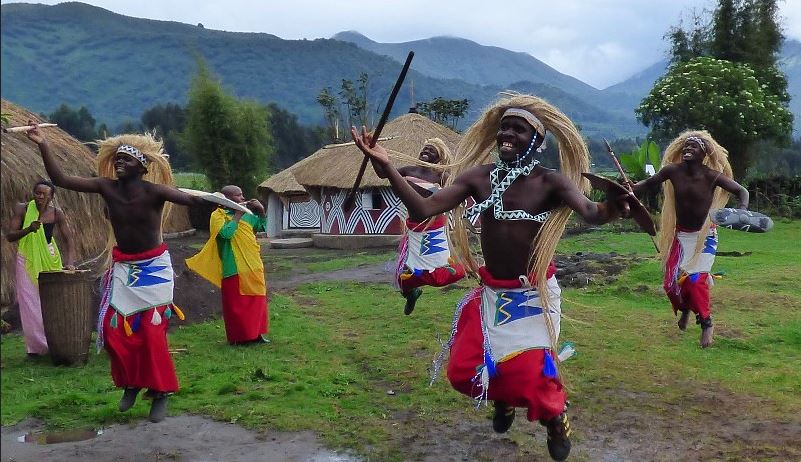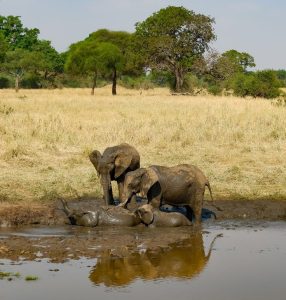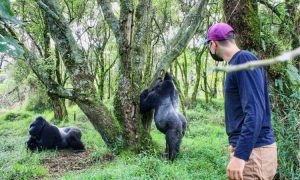Traditional dance and music in Rwanda
Rwandan traditional dance and music are vivid cultural expressions that are strongly rooted in the country’s history, customs, and social fabric. They are effective storytelling media that preserve heritage, communicate values, and promote social solidarity. These art forms, which include the iconic intore dance and numerous musical styles, are integrated enter rituals, festivals, and daily life, reflecting Rwandan identity and resilience. Traditional dance and music in Rwanda
Storytelling history
Rwadan traditional dances and musicare ot just performances, they are living archives, recounting historical events, conveying social messages across ages, and preserving cultural narratives. Traditional dance and music in Rwanda
Social cohesion
These art forms bring people tog, fostering a sense of community, belonging, and shared identity.
Symbolism
Dances often incorporate symbolic movements, customs, and musical instruments that represent specific aspects of Rwandan culture, such as bravery, fertility, and peace.
Ceremonial and social occasions
Dance and music are integral to Rwandan ceremonies, weddings, naming ceremonies, festivals, and social gatherings marking life events and celebrations.
Intore dance
The most famous Rwandan dance, the intore, meaning the chosen ones, was historically performed by elite warriors and symbolizes bravery, strength, and victory.y
Musical instruments
Traditional instruments like inaga, string instruments,igomadrums, and various aerophones, flutes, and horns accompany the dances, creating a rich auditory experience.e
Cultural preservation
Modern initiatives are working to preserve and promote these traditional forms, ensuring that the younger generation appreciates their cultural heritage.
Tourism and cultural experiences
Rwandan dance and music are a major draw for tourists, offering authentic cultural experiences and insights into Rwandan tradition.
Umushayayo dance
This graceful dance performed by women embodies the beauty, humility, and dignity of Rwandan women.
What is traditional dance in Rwanda?
In Rwanda, the most prominent traditional dance is the into, often referred to a the dance of the warrior., It’sis a dynamic performance with three distinct parts: the women’s ball, the men’s warrior dance, and drumming. Beyond the intro, other notable dances include umushagiriro(courtship dance ), ikinimb, and ibihozo, each with its unique style and significance.
Intore
This dance is spectacular, with the dancers often wearing grass wigs and wielding spears, mimicking a warrior’s movement and battle. In this dance is a powerful symbol of Rwandan culture and history, showcasing the strength, agility, and grace of the Rwandan people..e
Umushagiriro
Also known as the cortsip dne,umushagiriro is performed by young men and women with movements and gestures that express readiness for marriage..
Ikinimba and ibihozo
These dances are other examples of Rwandan traditional dance forms, each with its unique rhythms, movements, and cultural significance.
Beni
Rwanda’s traditional dances are more than just performance; they are integral to the nation’s cultural identity, embodying its history and values, and social structure.
What is traditional music and dance?
Traditional music and dance are forms of artistic expression deeply rooted in the cultural heritage of a specific group ofpeoplel They are passed down through generations, often orally, and reflect the community, history, beliefs, a way of life. These practices are not static: they evolve through continuity, variation, and community selection.n
Cultural significance
Traditional music and dance are integral to ceremonial celebrations and social interaction within a community.
Oral transmission
These art forms are typically learned and shared through obobservationmitationno, and participation rather than through formal instruction.
Community involvement
Traditional music and dance often involve the entire community, fostering a sense of belonging and shared identity.
Dynamic and evolving
While rooted in tradition, these art forms are not stagnant.t They adapt and change over time, reflecting the community’s evolving experiences and creative impulses.
What is traditional music and dance?
It reflects the unique history, beliefs, and social structures of a specific community. It frequently uses distinctive musical instruments and vocal styles and may accompany various social and ceremonial events. Examples include the ngoma dance of the Baganda people in Uganda and the endonga dance of the Karajong..
Traditional dance is the physical expression oculture’sures sto, rites rit, and celebrations. Examples include the akogo dance, a courtship dance in Uga, nda, and the Bakisimba dance, also known as nankasa or muwogla, originating from the Baganda people.
Cultural significance
They are central to a community’s identity, reflecting its historyvalues, and beliefs.fs
Social and ceremonial roles
They often play a role in significant life events, rituals, and celebrations,, ns connecting individuals to their community and ancentors
Musical instruments and vocal styles
Traditional music often utilizes unique instruments and vocal techniques that are characteristic of the culture.
Physical expression
Traditional dance provides a physical and visual representation of cultural narratives and beliefs..s
What kind of music is popular in Rwanda?
A mix of traditional music and modern genres like as hip-hop and R&B.
Traditional music. Ic..rwadan traditional music is integral to their culture, used in ceremonies, festivals, and storytelling. Traditional instruments thingombdrumsms, inanga zither, and ikembareeare still used more often than modern instruments in contemporary music.




